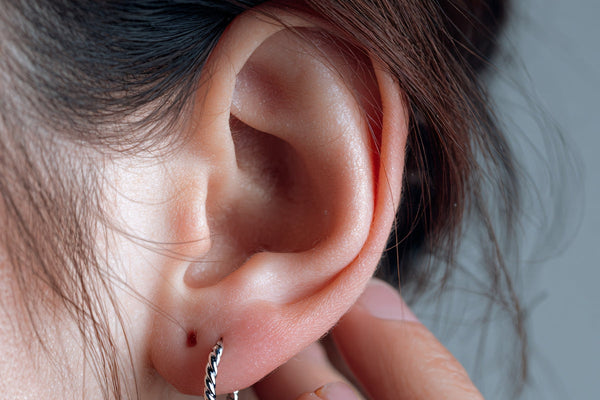
Eustachian tube dysfunction (ETD) is a common middle ear condition that can cause feelings of pressure, fullness, or muffled hearing. It happens when the Eustachian tubes - small passageways that connect the middle ear to the back of the nose and throat - become blocked, swollen, or unable to open properly.
At Leightons, we understand that blocked or pressured ears can feel uncomfortable and frustrating. The good news is that ETD is often temporary and treatable. Our expert audiologists can help identify the cause of your symptoms and ensure your ears are healthy, providing peace of mind and clear guidance on next steps.
What is Eustachian tube dysfunction?
The Eustachian tube plays an important role in keeping your ears balanced. It helps to:
· Equalise air pressure between your middle ear and the environment.
· Drain fluid from the middle ear into the back of your throat.
When the tube becomes blocked or inflamed, it can trap air and fluid inside the middle ear, preventing the eardrum from moving freely. This pressure imbalance can cause your ears to feel blocked, full, or under pressure. ETD can affect one or both ears and is more common after colds, sinus infections, or allergies.
What causes Eustachian tube dysfunction?
Several factors can cause or contribute to ETD, including:
· Colds, flu, or sinus infections that cause swelling in the nasal passages.
· Allergies leading to inflammation or excess mucus production.
· Rapid air pressure changes, such as during flying, diving, or mountain travel.
· Nasal congestion or blocked sinuses.
· Smoking or exposure to irritants, which can inflame the tube lining.
· Anatomy and age - children have shorter, narrower Eustachian tubes, which can block more easily.
Most cases of ETD improve once the underlying cause is treated, but persistent cases may need further investigation to rule out infection or chronic inflammation.
Common symptoms of ETD
Symptoms of Eustachian Tube Dysfunction can vary in intensity but often include:
· Muffled or reduced hearing
· A feeling of fullness or pressure in the ear
· Clicking, popping, or crackling sounds when swallowing or yawning
· Ear pain or mild discomfort
· Dizziness or mild imbalance
· Temporary hearing loss after altitude changes or a cold
These symptoms can come and go or persist for several days or weeks. If you experience ongoing ear pressure or discomfort, it’s best to have your ears checked by a professional.
How is Eustachian tube dysfunction treated?
For many people, ETD clears up naturally as congestion or inflammation improves. However, there are several simple steps you can take to help relieve the pressure and promote recovery:
· Swallow, yawn, or chew gum to help the tubes open and balance air pressure.
· Use a saline nasal spray or decongestant (if suitable for you) to ease nasal congestion.
· Manage allergies with antihistamines or allergy sprays recommended by your GP or pharmacist.
· Avoid sudden altitude changes (such as flying) if you have a cold or sinus infection.
If symptoms persist or you experience hearing changes, pain, or dizziness, it’s important to seek professional advice. A simple ear health check can rule out other issues such as wax build-up, infection, or fluid behind the eardrum.
How Leightons can help
At Leightons, we offer ear health checks and hearing assessments to help you understand what might be causing your symptoms. Our audiologists can safely examine your ears, check for wax, infection, or middle ear issues, and refer you to an ENT specialist if further treatment is needed.
We’re here to help you feel comfortable, protect your hearing, and restore balance to your ear health.
Book your ear health check today and take the first step towards clearer, more comfortable hearing.








